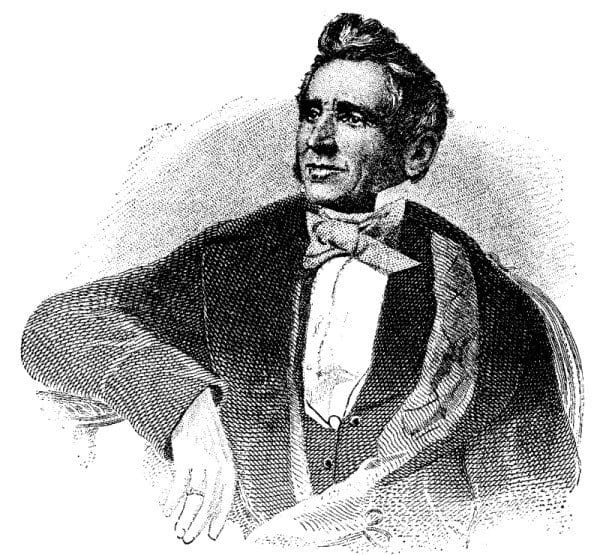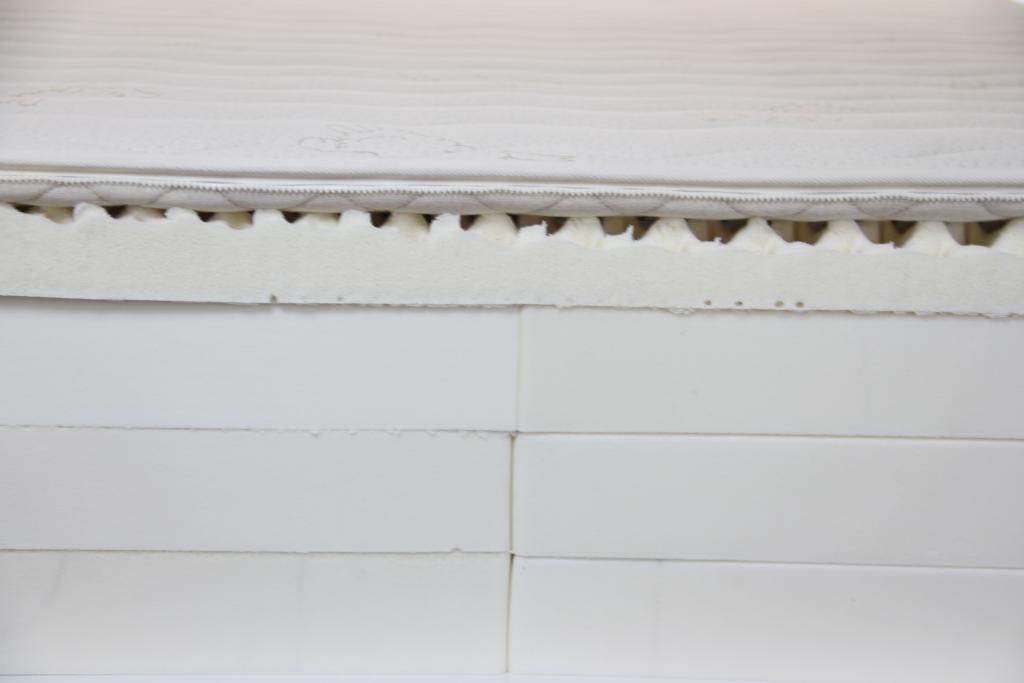History of Natural Latex Rubber
Derived from the hevea brasiliensis, or rubber tree, latex has natural qualities that simply make it the PERFECT MATTRESS MATERIAL.
100% Talalay Natural Latex provides the best comfort and support for your individual sleep needs AND consumer peace-of-mind. Good for you…good for our environment!

Charles Goodyear and the Strange Story of Rubber
In midsummer of 1834 a bankrupt hardware merchant from Philadelphia, Charles Goodyear, walked into the New York retail store of the Roxbury India Rubber Co., America’s first rubber manufacturer. He showed the store manager a new valve he had devised for rubber life preservers. The manager shook his head sadly. The company wasn’t in the market for valves now; it would be lucky to stay in business at all.
He showed Goodyear why: rack on rack of rubber goods which had been melted to malodorous glue by the torrid weather. In the company’s factory at Roxbury, Mass., he confided, thousands of melted rubber articles were being returned by outraged customers. The directors had met in the dead of night to bury $20,000 worth of stinking rejects in a pit.
The “rubber fever” of the early 1830s had ended as suddenly as it had begun. At first everybody had wanted things made of the new waterproof gum from Brazil, and factories had sprung up to meet the demand. Then abruptly the public had become fed up with the messy stuff which froze bone-hard in winter and turned glue-like in summer. Not one of the young rubber companies survived as long as five years. Investors lost millions. Rubber, everyone agreed, was through in America.
Goodyear disappointedly pocketed the valve and took his first good look at rubber. He had played with bits of it as a child, but now, at 34, he experienced a sudden curiosity and wonder about this mysterious “gum elastic.” “There is probably no other inert substance,” he said later, “which so excites the mind.”
Returning to Philadelphia, Goodyear was clapped into jail for debt. It was not his first sojourn there, nor his last. He asked his wife to bring him a batch of raw rubber and her rolling pin. Here, in his cell, Goodyear made his first rubber experiments, kneading and working the gum hour after hour.
If rubber was naturally adhesive, he reasoned, why couldn’t a dry powder be mixed in to absorb its stickiness — perhaps the talc-like magnesia powder sold in drugstores? Out of jail again, he tried, with promising results.
He talked a boyhood friend into backing a modest venture. Charles, his wife and small daughters made up several hundred pairs of magnesia-dried rubber overshoes in their kitchen. But before he could market them summer came, and he watched his footwear sag into shapeless paste.
Neighbors complained about Goodyear’s smelly gum, so he moved his experiments to New York. There a friend gave him a fourth-floor tenement bedroom for his “laboratory.” A brother-in-law came to his squalid quarters, lectured him about his hungry children, advised him that rubber was dead. “I am the man to bring it back,” said Goodyear.

He was adding two drying agents to his rubber now, magnesia and quicklime, then boiling the mixture and getting a better product all the time. Impressed, a New York trade show awarded him a medal.
Goodyear lavished all the arts of decoration on his dingy samples, painted them, gilded them, embossed them. Running short of material one morning, he decided to re-use an old decorated sample and applied nitric acid to remove its bronze paint. The piece turned black, and Goodyear threw it away.
A few days later he remembered that somehow the blackened scrap had felt different. He retrieved it from his trash can and found he was right. The nitric acid had done something to the rubber, made it almost as smooth and dry as cloth. This was better rubber than anyone had ever made before.
A New York businessman advanced several thousand dollars to begin production. But the financial panic of 1837 promptly wiped out both the backer and the business. Destitute, Charles and his family camped in the abandoned rubber factory on Staten Island, living on fish he caught in the harbor.
In time, Goodyear got new backing in Boston and again seesawed to momentary prosperity. His partners wangled a government contract for 150 mailbags, to be manufactured by the nitric-acid process. After making the bags Goodyear was so sure of himself that he stored them in a warm room and took the family away for a month’s vacation. When he returned, the mailbags were melted. Underneath their “dry-as-cloth” surface lay the same old sticky gum.
After five futile years, Goodyear was near rock bottom. Farmers around Woburn, Mass. where he now lived, gave his children milk and let them dig half-grown potatoes for food.
The great discovery came in the winter of 1839. Goodyear was using sulphur in his experiments now. Although Goodyear himself has left the details in doubt, the most persistent story is that one February day he wandered into Woburn’s general store to show off his latest gum-and-sulphur formula. Snickers rose from the cracker-barrel forum, and the usually mild-mannered little inventor got excited, waved his sticky fistful of gum in the air. It flew from his fingers and landed on the sizzling-hot potbellied stove.
When he bent to scrape it off, he found that instead of melting like molasses, it had charred like leather. And around the charred area was a dry, springy brown rim — “gum elastic” still, but so remarkably altered that it was virtually a new substance. He had made weatherproof rubber.

This discovery is often cited as one of history’s most celebrated “accidents.” Goodyear stoutly denied that. Like Newton’s falling apple, he maintained, the hot stove incident held meaning only for the man “whose mind was prepared to draw an inference.” That meant, he added simply, the one who had “applied himself most perseveringly to the subject.”
The winter after Goodyear’s discovery was the blackest of his life. Dyspeptic and gout-racked, his health broken, he hobbled about his experiments on crutches. He knew now that heat and sulphur miraculously changed rubber. But how much heat, for how long? With endless patience he roasted bits of rubber in hot sand, toasted them like marshmallows, steamed them over the teakettle, pressed them between hot irons. When his long-suffering wife took her bread from the oven he thrust in chunks of evil-smelling gum.
At night he lay awake, afraid that he would die and the secret die with him. He pawned his watch and the household furniture.
When even the dinnerware was gone, he made rubber dishes to eat from. Then the food was gone too.
That spring he went to Boston to look up friends, found none, was jailed for nonpayment of a $5 hotel bill, and came home to find his infant son dead. Unable to pay for a funeral, Goodyear hauled the little coffin to the graveyard in a borrowed wagon. Of the 12 Goodyear children, six died in infancy.
At last he found that steam under pressure, applied for four to six hours at around 270 degrees Fahrenheit, gave him the most uniform results. He wrote his wealthy New York brother-in-law — who had once lectured him about his parental obligations — of his discovery. This time the brother-in-law, a textile manufacturer, was interested, for Charles told him that interwoven rubber threads would produce the fashionable puckered effect then much favored in men’s shirts. Two “shirred goods” factories were rushed into production and, on the ruffled shirtfronts of dandies, rubber rode to worldwide success.
As soon as he could, Goodyear disposed of the manufacturing interests which might have made him a millionaire and went back to his experiments. He wanted to make everything of rubber: banknotes, musical instruments, flags, jewelry, ship sails, even ships themselves. He had his portrait painted on rubber, his calling cards engraved on it, his autobiography printed on and bound in it. He wore rubber hats, vests, ties.
Goodyear saw rubber as what we know it is today: the first and most versatile of the modern “plastics.” He perceived in it a “vegetable leather” that defied the elements, an “elastic metal,” a wood substitute that could be shaped in molds.
Some of his ideas still turn up as “new” uses for rubber. Many food packagers, for example, now wrap their products in Pliofilm, a rubber-derived plastic; Goodyear suggested the same application in 1850. Rubber paint, car springs, ferryboat bumpers, wheelbarrow tires, inflatable life rafts, and “frogmen” suits are other recent innovations he described a century ago.
Goodyear’s business deals, licensing manufacture under his scores of patents, were ridiculously bad. Shirred-goods rights, for instance, went for royalty of three cents a yard; the licensees made $3 a yard.
Against “patent pirates” Goodyear was forced to prosecute 32 infringement cases all the way to the U.S. Supreme Court. In one famous 1852 case, his advocate was no less a personage than Secretary of State Daniel Webster. Goodyear paid Webster $15,000 for temporarily doffing the robes of Cabinet office — the largest fee ever paid an American lawyer to that time. In a two-day speech Webster won a permanent injunction against further patent infringements. It made headlines, but it didn’t stop the piracy.
Goodyear was slow in filing foreign patent applications. But he had sent samples of his heat-and-sulphur-treated gum to British rubber companies without revealing details. One sample was seen by famed English rubber pioneer Thomas Hancock, who had been trying for 20 years to make weatherproof rubber. Hancock noticed a yellowish sulphur “bloom” on the Goodyear sample’s surface. With that clue, he reinvented vulcanized rubber in 1843, four years after Goodyear. By the time Goodyear applied for an English patent he found that Hancock had filed a few weeks earlier.
Offered a half-share of the Hancock patent to drop his suit, Goodyear foolishly declined — and lost. A friend of Hancock named the contested process “vulcanization,” after Vulcan, the Roman god of fire.

At the London and Paris world’s fairs of the 1850s Goodyear installed great pavilions built entirely of rubber, floor to roof. When his French patent was canceled on a technicality and his French royalties stopped before he could pay his bills, he was seized by gendarmes and hustled off to a 16-day stay at his familiar “hotel” (as he called it) — debtors’ prison. There he received the Cross of the Legion of Honor, bestowed by Emperor Napoleon III.
When he died, in 1860, he was $200,000 in debt. Eventually, however, accumulated royalties made his family comfortable. His son Charles Jr., inherited something more precious — inventive talent — and later built a small fortune on shoemaking machinery.
Neither Goodyear nor his family was ever connected with the company named in his honor, today’s billion-dollar Goodyear Tire & Rubber Co., the world’s largest rubber business. Goodyear’s only direct descendant among modern companies is United States Rubber, which years ago absorbed a small company he once served as director.
Today there is a cultivated rubber tree for every two human beings on earth. Three million tree “milkers” harvest the crop. The United States alone imports almost half of it, and synthesizes as much or more from petroleum. Nearly 300,000 Americans earn their livelihoods in rubber manufacturing, this year will produce $6 billion worth of products.
The whole huge apparatus owes its existence to the invincible little fanatic who might have died a bitter man, but didn’t.
“Life,” he wrote, “should not be estimated exclusively by the standard of dollars and cents. I am not disposed to complain that I have planted and others have gathered the fruits. A man has cause for regret only when he sows and no one reaps.”
REPRINTED FROM THE JANUARY 1958 ISSUE OF READER’S DIGEST. ©1957 THE READER’S DIGEST ASSOCIATION, INC., PLEASANTVILLE, N.Y. 10570 PRINTED IN U.S.A.


